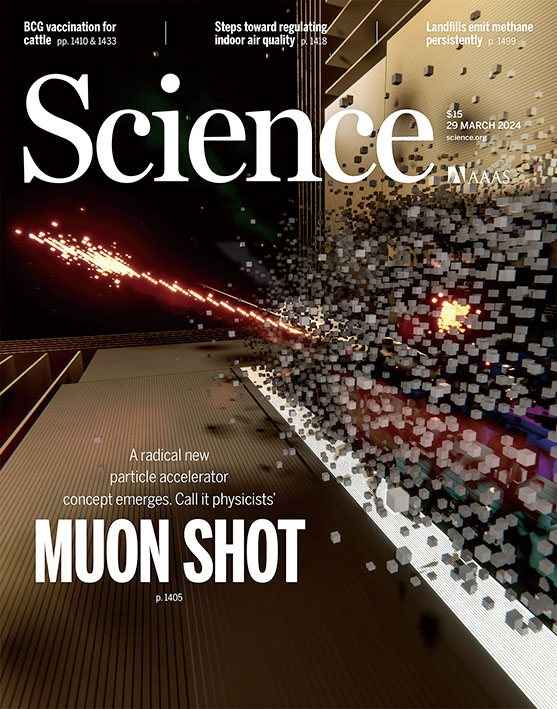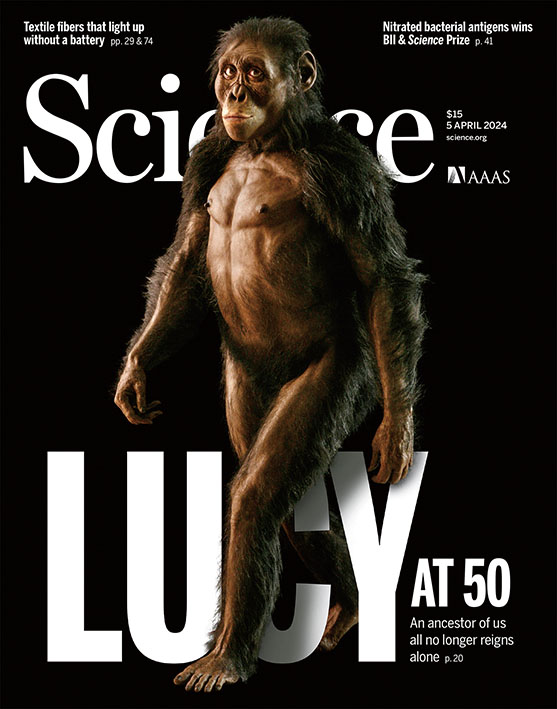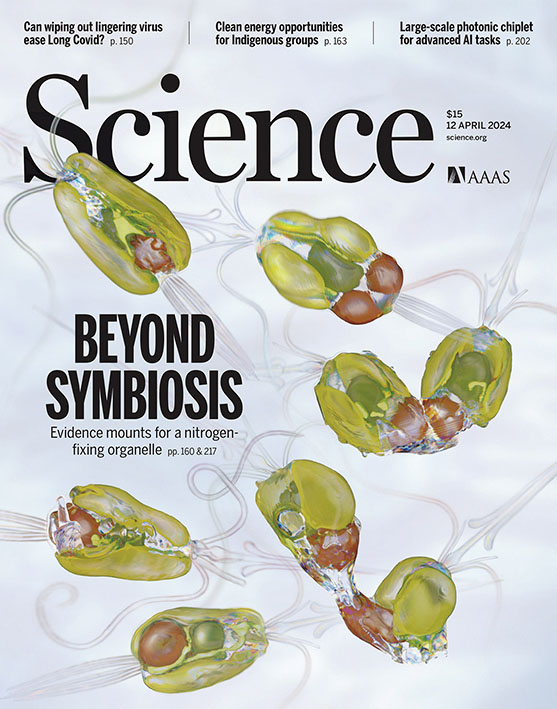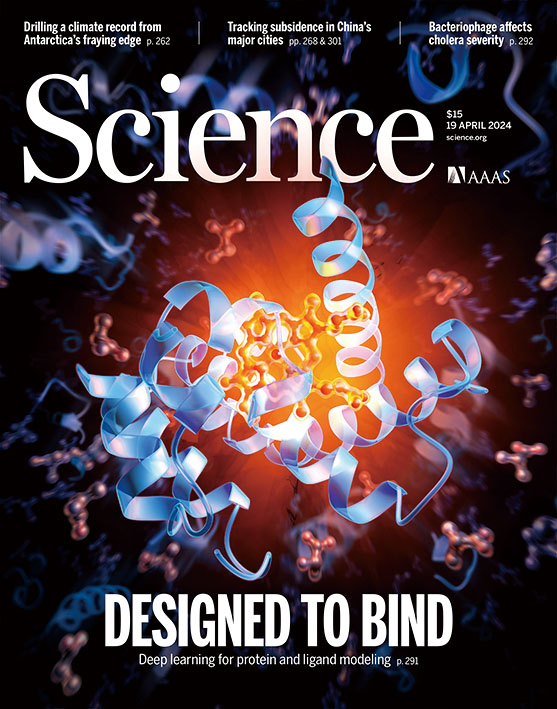[点击科学]2024年05月点击科学
2024-05/总第338期

2024-03-29
相比使用更传统的质子对撞机,物理学家希望通过碰撞被称为μ介子(muons)的不稳定重亚原子粒子,更快、更便宜地获取到新发现所需的高能。但是这项未经证实的技术具有挑战性,因为μ介子会在不到1秒钟的时间内衰变。在封面图展示的模拟实验中我们可以看到,碰撞产物极速穿过μ介子衰变产生的外来粒子薄雾。
By colliding weighty, unstable subatomic particles called muons, physicists hope to reach the high energies needed for new discoveries more quickly and cheaply than with a more-conventional proton collider. But the unproven technology is challenging because muons decay in a fraction of a second. In the simulation shown here, collision products streak through a haze of extraneous particles from the muons' decay.

2024-04-05
50年前,古人类学家在埃塞俄比亚出土了距今320万年前的“露西”骨架,改变了我们对人类起源的看法。通过研究她的骨骼模型,以及她所属的南方古猿阿法种其他成员的骨骼,科学家将露西身体上的肌肉一块块拼凑起来,最终将封面上的重建图像呈现在世人面前。如今,在针对我们直系祖先的争论中,露西仍是最佳候选人之一。
Fifty years ago in Ethiopia, paleoanthropologists unearthed the 3.2-million-year-old skeleton known as “Lucy” and transformed our views of humanity’s origins. This reconstruction was created by rebuilding Lucy’s body, muscle by muscle, over a cast of her skeleton and bones from other members of her species, Australopithecus afarensis. Today, Lucy faces competition for the role of our direct ancestor but remains the best candidate.

2024-04-12
根据细胞内成像和蛋白质组学证据,科学家在海洋藻类中发现了一种固氮细胞器,或者称之为“硝基体”。这一发现揭示了从内共生体到细胞器的进化转变。封面图像描绘了带有硝基的单细胞蓝藻A群(UCYN-A,较大的棕色球体)藻类(沿海颗石藻)的细胞结构和同步细胞分裂。
A nitrogen-fixing organelle, or “nitroplast,” has been identified in a marine alga on the basis of intracellular imaging and proteomic evidence. This discovery sheds light on the evolutionary transition from endosymbiont to organelle. The image depicts the cell architecture and synchronized cell division of the alga Braarudosphaera bigelowii with nitroplast UCYN-A (large brown spheres).

2024-04-19
研究人员开发了深度学习的方法预测与小分子、核酸和其他非蛋白质成分复合的蛋白质结构,以及设计与小分子结合的蛋白质。封面插图展示了在背景中像云层一样的氨基酸和短肽,它们聚集在一起形成了以橙色显示的目标配体血红素周围的中心蓝色蛋白质。
Researchers have developed deep-learning methods to predict the structures of proteins in complex with small molecules, nucleic acids, and other nonprotein components and to design proteins to bind to small molecules. The illustration shows a background cloud of amino acids and short peptides coming together to form the central blue protein around a target ligand, heme, shown in orange.






